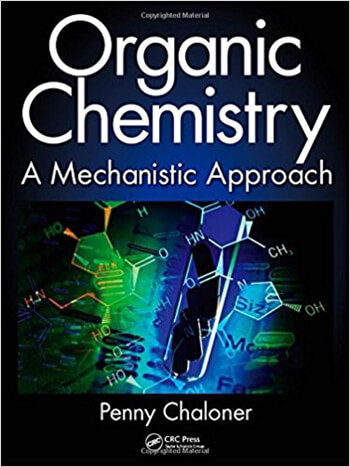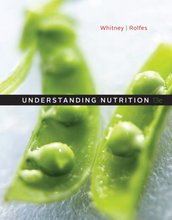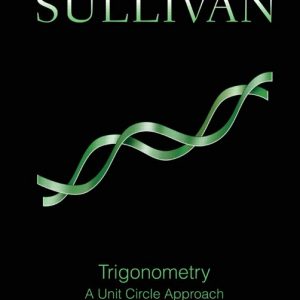This is completed downloadable of Organic Chemistry A Mechanistic Approach 1st Chaloner Solution Manual

Product Details:
- ISBN-10 : 9781482206906
- ISBN-13 : 978-1482206906
- Author: Penny Chaloner
Offering a different, more engaging approach to teaching and learning, Organic Chemistry: A Mechanistic Approach classifies organic chemistry according to mechanism rather than by functional group. The book elicits an understanding of the material, by means of problem solving, instead of purely requiring memorization. The text enables a deep understanding of underlying principles that can be applied to a wide range of problems and systems. It also teaches a way of thinking and analysis that will serve students well across many academic disciplines.
Covering all the key aspects of organic chemistry, this text emphasizes the development of skills through a student-centered approach. In order to provide a contemporary feel to the subject, the author has included some of the more modern synthetic approaches. In addition, later chapters address the biological, environmental, industrial, and forensic aspects of organic chemistry.
Pedagogical Features:
- Extensive review problems, which are the central means of integrating the material
- “Focus boxes” that highlight key points in the chapters
- An instructors’ website with full lecture notes in animated PowerPoint, a solutions manual in both Word and PowerPoint format, and additional problems for use in tests
A student website with solutions to review problems, and additional challenging problems and solutions for the ambitious, in animated PowerPoint and text versions
Table of Content:
Review of Atomic and Molecular Structure
Introduction
Atomic and Molecular Structure
Bonding
Review Problems
Alkanes and Friends: Structure, Bonding, Properties, and Nomenclature
Introduction
Hybridization in Methane, Ammonia, and Water
Drawing Molecules
Introduction to Alkanes
Stability, Strain, and Properties of Alkanes and Cycloalkanes
Review Problems
Alkenes, Alkynes, and Aromatic Compounds
Alkenes
Aromatic Hydrocarbons
Alkynes: Hydrocarbons Containing Triple Bonds
Resonance
Review Problems
Heteroatom-Containing Functional Groups
Compounds Containing sp3 Nitrogen Atoms
Molecules Containing sp2 Nitrogen Atoms
Molecules with sp-Hybridized Nitrogen
Compounds Containing sp3 Oxygen
Compounds Containing sp2 Oxygen
Priorities in Nomenclature
Structure and Bonding in Some Highly Reactive Species
More Resonance
Review Problems
More Challenging Problems
Purification and Identification of Organic Compounds 1
Introduction
Purification of Organic Compounds
Mass Spectrometry
UV/Visible Spectroscopy
Infrared Spectroscopy
Review Problems
More Challenging Problems
Identification of Organic Compounds 2: Nuclear Magnetic Resonance Spectroscopy
Introduction
Chemical Shifts
Spin–Spin Coupling
Protons Attached to Oxygen and Nitrogen
13C NMR Spectroscopy
Review Problems
More Challenging Problems
Stereochemistry
Introduction
Conformations of Alkanes
Cycloalkanes
Chirality
Fischer Projections
Review Problems
More Challenging Problems
Introduction to Mechanism
Introduction
Studying Organic Reaction Mechanisms
Classification of Reactions
Acids and Bases
Tautomers: A Slight Digression
Writing Mechanisms Using Curly Arrows
Review Problems
More Challenging Problems
Nucleophilic Substitution at Saturated Carbon
Introduction
Mechanistic Types
Stereochemical Implications
Effect of Nucleophile
Effect of the Leaving Group
Effect of Substrate Structure
Effect of Solvents
Competing Reactions
Competition between SN1 and SN2 Processes
Applications and Scope of the Reaction
Neighboring Group Participation and Intramolecular Reactions
Review Problems
More Challenging Problems
Elimination Reactions
Introduction
Mechanisms
Stereochemistry
Regiochemistry
Effect of Substrate
Substitution versus Elimination
Carbocation Rearrangements
Examples and Applications
Elimination to Give Alkynes
Other Elimination Reactions
Review Problems
More Challenging Problems
Addition Reactions
Introduction
Electrophilic Reactions
Radical Addition Reactions
Multicenter Processes
Hydrogenation
Review Problems
More Challenging Problems
Electrophilic Aromatic Substitution
Introduction
Electrophiles
Orientation Effects
Reactions of Polycyclic Aromatic Compounds
Heterocyclic Aromatic Compounds
Review Problems
More Challenging Problems
Nucleophilic Aromatic Substitution and Synthesis of Aromatic Compounds
Introduction
Unimolecular Nucleophilic Substitution of Aromatic Compounds: The Reactions of Diazonium Salts
with Simple Nucleophiles
Azo Coupling Reactions
Nucleophilic Substitution of Aryl Halides, SN2Ar
Substitution of Haloheterocycles
Substitution via Benzyne and Related Intermediates
Reactions in Side Chains of Aromatic Compounds
Reduction of Benzene Rings
Carbon–Aryl Bond Formation
Aromatic Synthesis
Review Problems
More Challenging Problems
Addition to Carbon–Heteroatom Double Bonds
Introduction and Review
Mechanism of Addition Reactions
Reversible Addition Reactions
Irreversible Addition Reactions
Review Problems
More Challenging Problems
Substitution of Carbonyl Compounds: Carboxylic Acids and Their Derivatives
Introduction: Review of Nomenclature
Substitution Reaction
Oxygen Nucleophiles
Nitrogen Nucleophiles
Synthesis of Acid Chlorides
Hydride as Nucleophile
Carbon Nucleophiles
Review Problems
More Challenging Problems
Lipids and Carbohydrates
Introduction
Lipids
Carbohydrates
Review Problems
More Challenging Problems
Substitution α and β to Carbonyl Groups
Introduction
Formation of Enols and Enolates
Isomerizations Involving Enols and Enolates
Reactions of Enols and Enolates with Electrophiles
Two Useful Reactions of Nonenolizable Carbonyl Compounds
Reactions at the β-Position of α,β-Unsaturated Carbonyl Compounds and Other Electron-Poor Alkenes
Review Problems
More Challenging Problems
Rearrangement Reactions
Introduction
Migration to Electron-Deficient Carbon
Migration to Electron-Deficient Nitrogen
Migration to Electron-Deficient Oxygen: The Baeyer–Villiger Oxidation
Anionic Rearrangements
Neutral Rearrangements
Review Problems
More Challenging Problems
Synthesis 1: One-Group Disconnections
Introduction
Simple Disconnections and the Retrosynthetic Approach
One-Group Disconnections
Review Problems
More Challenging Problems
Synthesis 2: Two-Group Disconnections and Protecting Groups
Introduction to Two-Group Disconnections
1,2-Difunctionalized Compounds
1,3-Difunctionalized Compounds
1,4-Difunctionalized Compounds
1,5-Difunctionalized Compounds
Robinson Annulation
1,6-Difunctionalized Compounds
Pericyclic Disconnections
Protecting Group
Further Reading
Review Problems
More Challenging Problems
More Challenging Problems
Polymeric Materials
Introduction
Polymer Structures
Preparation of Addition or Chain-Growth Polymers
Preparation of Step-Reaction Polymers
Unusual Biopolymers
Review Problems
More Challenging Problems
Amines, Alkaloids, Amino Acids, Peptides, and Nucleic Acids
Synthesis of Amines
Alkaloids
Amino Acids
Peptides
Nucleic Acids
Review Problems
More Challenging Problems
Catalysis of Organic Reactions
Introduction
Catalysis by Acids and Bases
Lewis Acid Catalysis
Phase-Transfer Catalysis
Reactions Catalyzed by Metal Surfaces
Reactions Catalyzed by Transition Metal Complexes
Organocatalysis
Enzyme Catalysis
Review Problems
More Challenging Problems
Organic Chemistry in Industry
Introduction
Process Chemistry versus Research Chemistry
Pharmaceutical Industry
Agrochemicals
Dyes and Colorants
Review Problems
Further Reading
Organic Chemistry and the Environment
Introduction
Pesticides
Endocrine Disruptors
Chlorofluorocarbons and Their Replacements
Polycyclic Aromatic Hydrocarbons
Plastics: Recycle, Degrade, or Burn?
Is “Green Chemistry” the Future?
Review Problems
Further Reading
Organic Chemistry in Forensic Science
Introduction
Drugs of Abuse
Poisons and Poisoning
Testing for Blood
Dyes, Inks, and Paper
Trace Evidence
Visualization of Fingerprints
Review Problems
Appendix A: Glossary of Abbreviations and Acronyms
Appendix B: Some Common/Trivial Names You Need to Know
People Also Search:
organic chemistry a mechanistic approach 1st chaloner
organic chemistry a mechanistic approach 1st chaloner download scribd
organic chemistry a mechanistic approach 1st chaloner solution manual download pdf





